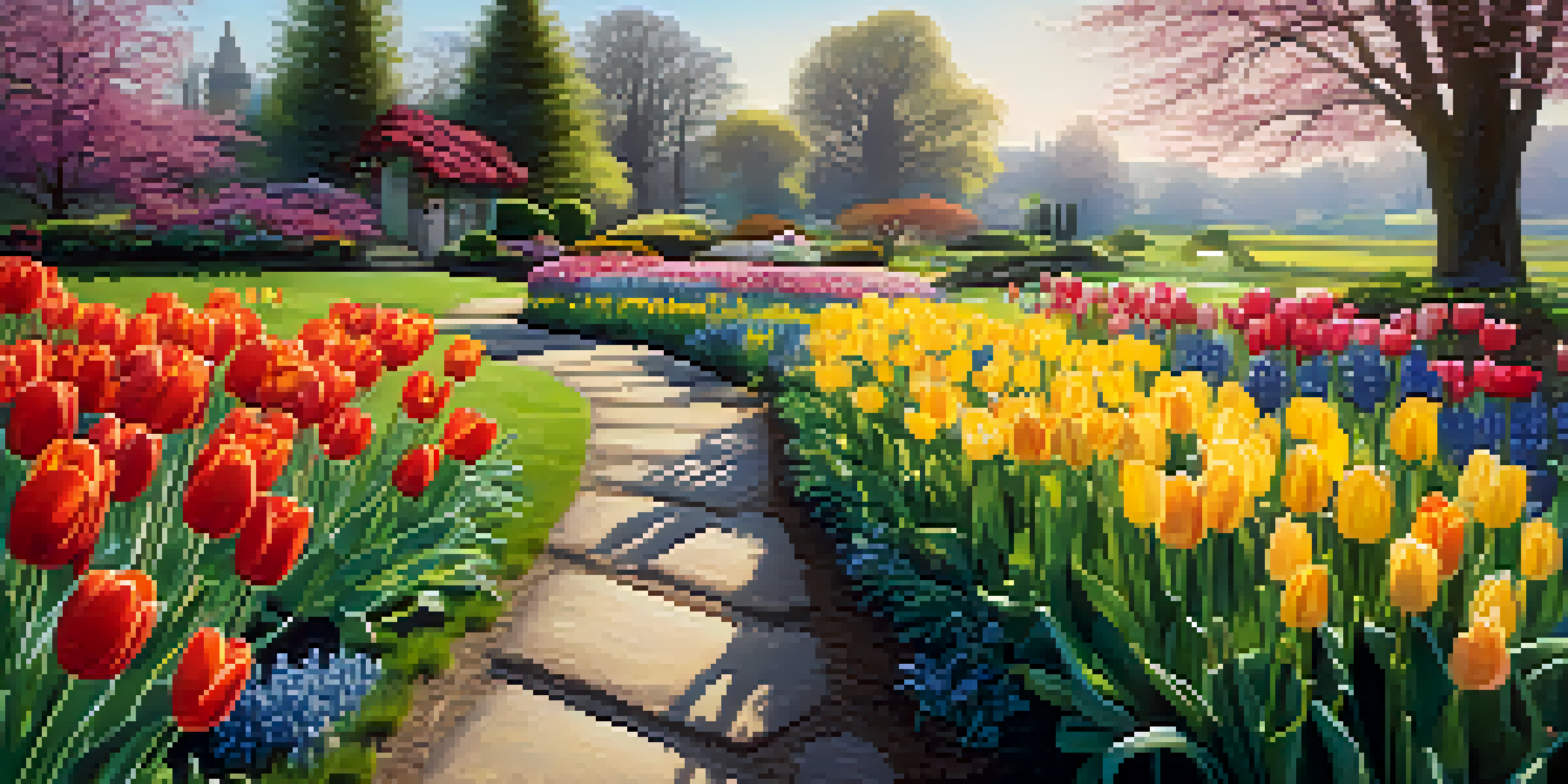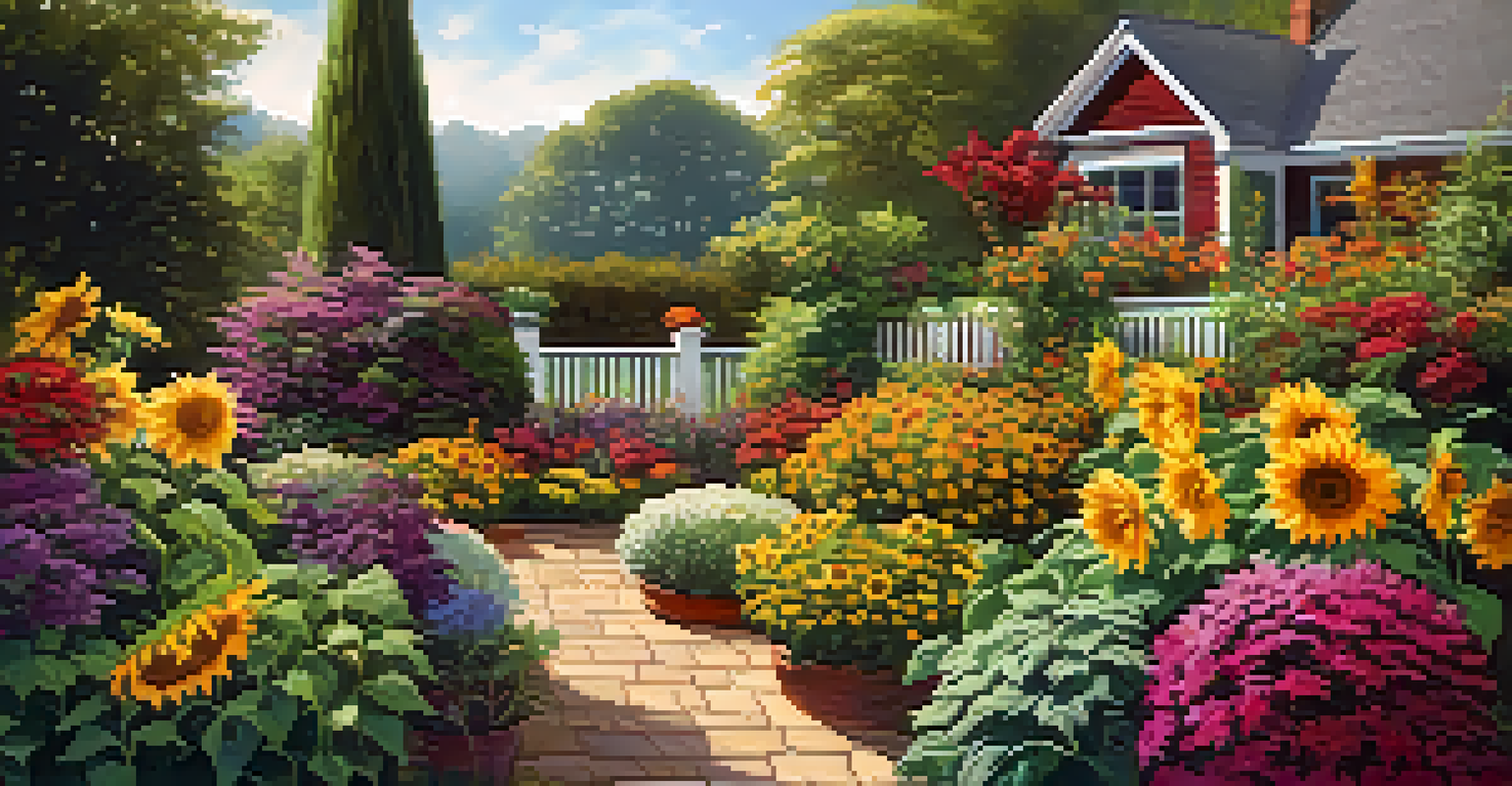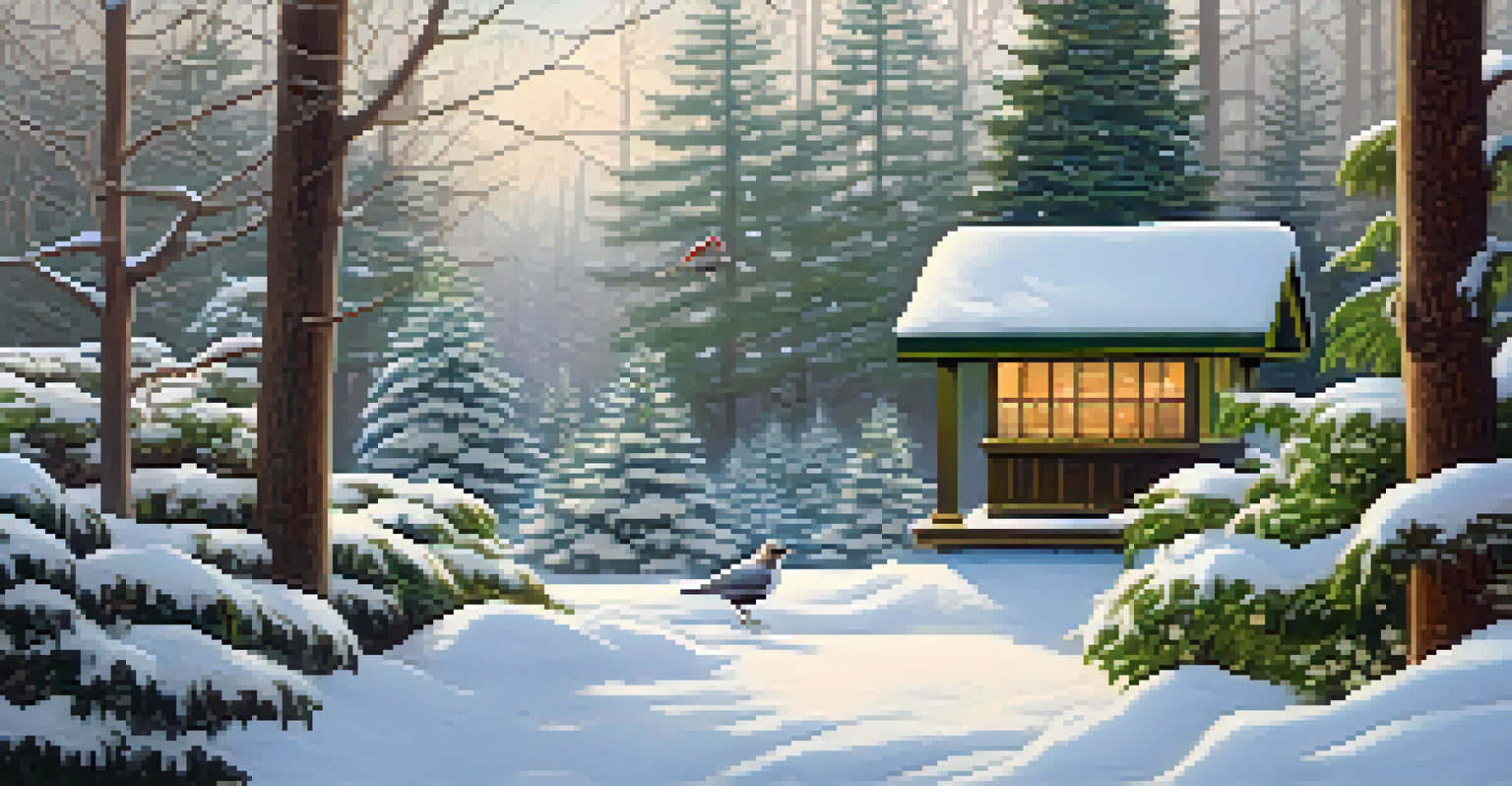Seasonal Planting: Trends for Year-Round Color

Understanding Seasonal Planting Basics
Seasonal planting is all about choosing the right plants for each time of year. By understanding the growth cycles of various plants, gardeners can ensure their gardens are vibrant throughout the seasons. It’s like having a wardrobe that changes with the weather—each season brings its own unique colors and textures.
To plant a garden is to believe in tomorrow.
When you plant seasonally, you're not just following trends; you're also working with nature. Plants that thrive in different seasons have unique requirements, and aligning your planting schedule with these can lead to better growth and more stunning displays. Imagine planting tulips in spring and then transitioning to sunflowers in summer; each season becomes a fresh chapter in your garden story.
Additionally, seasonal planting can enhance local ecosystems by supporting pollinators and other wildlife. For instance, certain flowers bloom in cycles that attract bees and butterflies at various times of the year, creating a lively, dynamic environment. This not only benefits your garden but the larger community of plants and animals around it.
Color Trends: What’s Hot This Year?
Color trends in gardening often mirror those in fashion and interior design, with certain hues standing out each year. This season, warm tones like coral and mustard are making waves, bringing a cozy feel to outdoor spaces. These colors can create a welcoming atmosphere and complement the natural landscape beautifully.

Incorporating these trending colors into your garden can be as easy as selecting the right flowers or foliage. For example, consider planting marigolds or zinnias for a pop of vibrant orange, or opt for goldenrod for a softer yellow hue. Pairing these with deep greens or even purples can create a stunning visual contrast that keeps your garden looking fresh and lively.
However, while trends are fun to follow, it’s essential to choose colors that resonate with your personal style. Your garden should reflect your tastes and preferences, so don’t be afraid to mix in your favorite shades or unique plants that speak to you. After all, your garden is a canvas waiting for your creative touch!
Best Plants for Spring Vibrance
Spring is the season of renewal, making it the perfect time to plant vibrant flowers that symbolize new beginnings. Think of classic choices like tulips, daffodils, and hyacinths, which burst forth with color after a long winter. These plants not only provide immediate visual appeal but also herald the arrival of warmer days.
Gardening adds years to your life and life to your years.
Another fantastic option for spring planting is pansies, known for their cheerful faces and wide array of colors. These hardy flowers are often among the first to bloom, providing early-season color and acting as a delightful welcome to your garden. Pair them with some early-blooming shrubs for a layered effect that draws the eye.
As you plan your spring garden, consider including a mix of perennials and annuals. Perennials, like peonies and irises, will come back year after year, while annuals can offer a burst of color that you can change each season. This combination not only keeps your garden dynamic but also allows for easy maintenance.
Creating Summer's Colorful Oasis
As summer approaches, it’s time to embrace the bold and vibrant colors that reflect the season’s heat. Popular choices like sunflowers and dahlias can add a sunny disposition to any garden, creating an oasis of warmth and joy. These flowers not only provide stunning visuals but also attract beneficial pollinators.
Consider incorporating a variety of textures and heights in your summer garden. Taller plants like hollyhocks can create a dramatic backdrop, while lower-growing flowers like petunias can fill in gaps and add depth. This layering approach not only looks beautiful but also enhances the overall visual interest of your space.
Don’t forget about foliage! Colorful leaves from plants like coleus can complement flower colors and provide a lush backdrop. Mixing in different shades of green, burgundy, or even variegated leaves can keep your garden lively even when the flowers start to fade.
Fall Foliage: A Different Kind of Color
As summer transitions to fall, the garden undergoes a beautiful transformation. This is the time to embrace the rich, warm tones of autumn—think reds, oranges, and yellows that mimic the changing leaves. Plants like asters and chrysanthemums not only bloom beautifully but also reflect the season’s palette perfectly.
In addition to flowers, consider incorporating ornamental grasses that sway gently in the breeze, adding movement and texture. Their feathery plumes can catch the sunlight and create a stunning display that adds depth to your fall garden. Pairing these with fall-blooming perennials can create a layered effect that keeps the garden vibrant.
Lastly, don't forget about seasonal decorations! Pumpkins, gourds, and other autumnal decorations can enhance the colors in your garden. These elements can add a touch of whimsy and make your garden a delightful place to enjoy the beauty of fall.
Winter Wonders: Keeping Color Alive
Winter might seem like a dull time for gardening, but there are plenty of ways to keep your outdoor space colorful. Evergreens, such as holly and pine, provide rich greens that stand out against a backdrop of white snow. Their sturdy presence can make your garden feel alive even in the coldest months.
Additionally, consider planting winter-blooming flowers like winter jasmine or hellebores, which can surprise you with their blooms during the chilly season. These hardy plants not only add a splash of color but also create a sense of hope as they signal that spring is just around the corner.
To enhance the winter garden, think about adding decorative elements like bird feeders and colorful garden ornaments. These features can attract birds and create a lively atmosphere in your yard. Even in winter, with a little creativity, your garden can be a vibrant and inviting space.
Sustainable Practices for Year-Round Color
Sustainability is becoming an essential aspect of gardening, and it can also enhance your garden's year-round color. Consider using native plants that are well-adapted to your local climate. These plants require less water and maintenance, allowing you to enjoy a beautiful garden without excessive effort.
Incorporating companion planting can also be a sustainable practice. Certain plants grow better together, helping to deter pests and improve soil health. For example, planting marigolds alongside vegetables can protect your crops while adding vibrant color to your garden.

Moreover, using organic mulch can keep your soil healthy and retain moisture, which is critical for maintaining plant health. This practice not only supports the ecosystem but also ensures that your garden remains lush and colorful throughout the seasons.
Planning Your Year-Round Color Strategy
To achieve year-round color in your garden, planning is key. Start by creating a seasonal planting calendar that outlines what to plant and when. This proactive approach can help you visualize how your garden will transform throughout the year, ensuring you have something in bloom at all times.
Consider the climate and soil conditions of your area when selecting plants. Researching which varieties thrive in your environment can save you time and frustration. Think of it as setting a solid foundation for a house—without the right base, your garden won’t flourish.
Finally, don’t hesitate to experiment and adjust your strategy as you learn what works best for your garden. Gardening is a journey, and each season offers an opportunity to refine your approach. By embracing the process, you'll not only enjoy a vibrant garden but also gain valuable gardening skills along the way.